Back in June, I had the amazing opportunity to go to Rapa Nui (known in the US as Easter Island) as a faculty lead on a study abroad trip. I’ve had a crazy semester and am way behind on writing blog posts, so I’m going to try to start catching up. First up: a bit more about Rapa Nui, this time focusing on my experience scuba diving there.
What Makes it Different
The seas surrounding Rapa Nui are as unique as the island itself. Unlike other Pacific dive spots, fish are not all that abundant (as you can see in my photos below). But there is a ton of coral, and it’s really healthy! There are also many interesting formations underwater due to the island’s volcanic past.
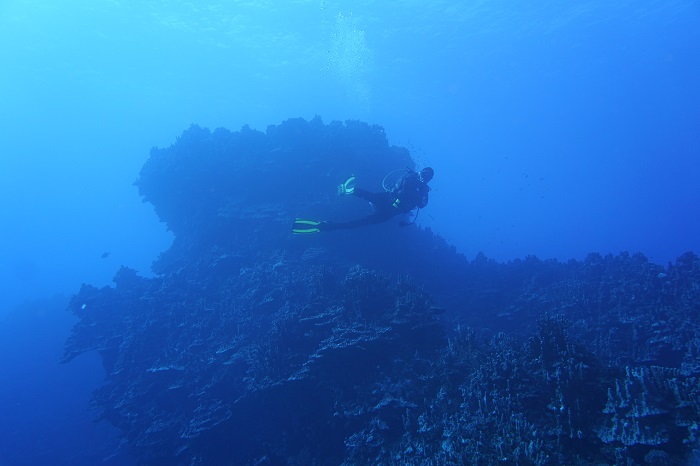
Our divemaster posing in front of an interesting volcanic formation.

Rapa Nui’s waters have great visibility and interesting underwater landscapes, but very little aquatic life.
Though many visitors to Rapa Nui do end up scuba diving, there just aren’t that many visitors due to how remote the island is (though this number is growing). This means the diving infrastructure is much different than that in a diving mecca like Bali or Hawaii. There are no decompression chambers on the island, and the island is 5 hours by plane to mainland Chile. This means it’s important to be extremely conservative with no-decompression limits and depths when diving Easter Island.
On top of that, it’s cold. I was there in June, which is winter on Rapa Nui, so I got stuck with some of the coldest waters they experience. The day I dove, the water temperature was 66F/19C. I had a 5mm wetsuit, gloves, and a hood on the first dive and was still really cold. On the second dive, I layered a shorty over the 5mm wetsuit, which made the dive more enjoyable.
If you can overcome the cold and convince yourself it’s ok to dive even with no decompression chamber available, the diving really is worth a try. The visibility is really high due to the low level of nutrients in the water, so you’re treated to really great underwater vistas. Coupled with the underwater volcanic formations, it’s a pretty unique dive experience.
And then, of course is the (fake) Moai that’s been positioned in shallow water close to the marina. Is it a tourist trap? Absolutely. Should you do the Moai dive anyway? Absolutely. It may have been made for a Kevin Costner movie and not by ancient Rapa Nui people, but it’s still fun to see the statue underwater surrounded by coral growth.
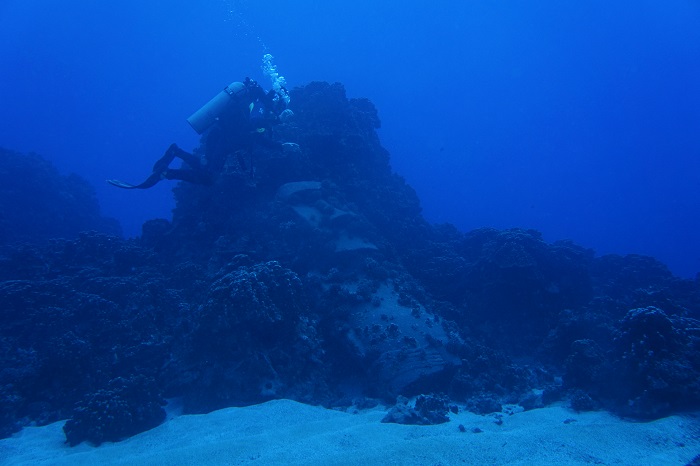
The fake moai – still pretty cool to see underwater even though it’s not real!
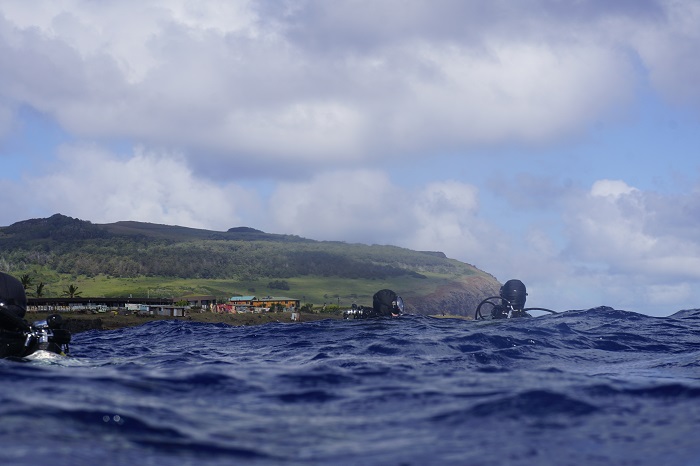
View of Rano Kau from the Moai dive site.
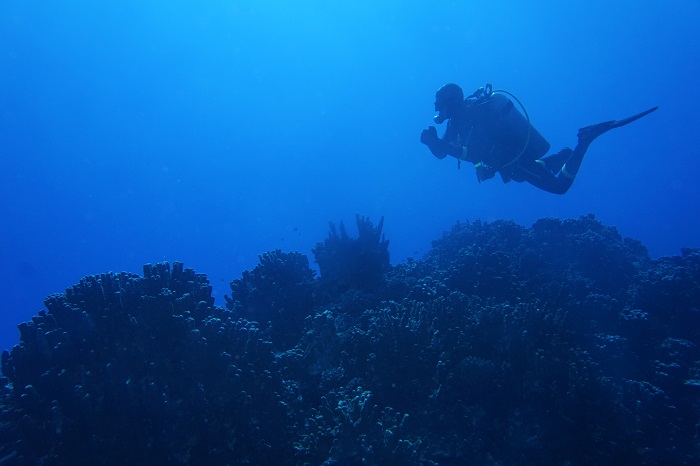
Rapa Nui has very clear water, but very few fish.
My Rapa Nui Dives
Because my trip was a work trip, I was only able to dive one day. We did two dives. The first was a deep dive at El Jardin, where we saw some cool formations and lots of eels. The second was the shallower Moai dive, which I was definitely not going to miss.
I went with Mike Rapu Dive Center, one of the oldest and most respected dive operators on the island. Their staff were very helpful all around, from the booking to getting me an extra wetsuit for me when I was cold.
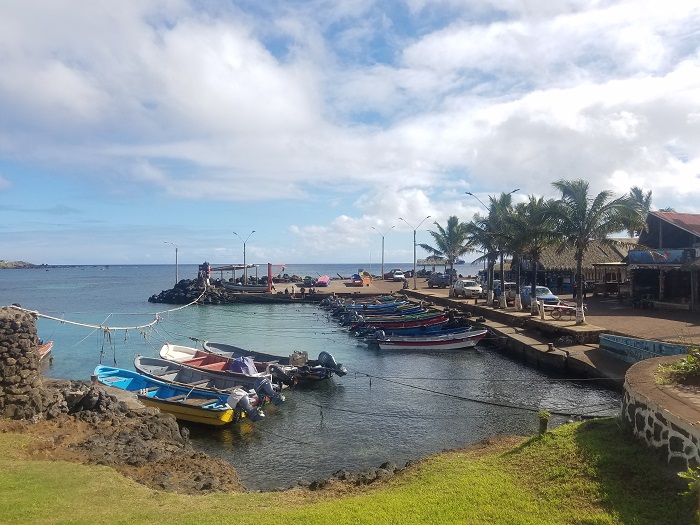
The harbor with the dive and fishing boats.
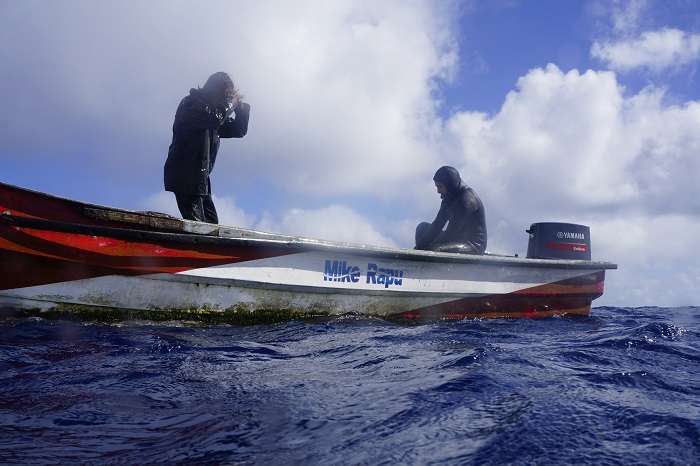
The Mike Rapu dive boat.
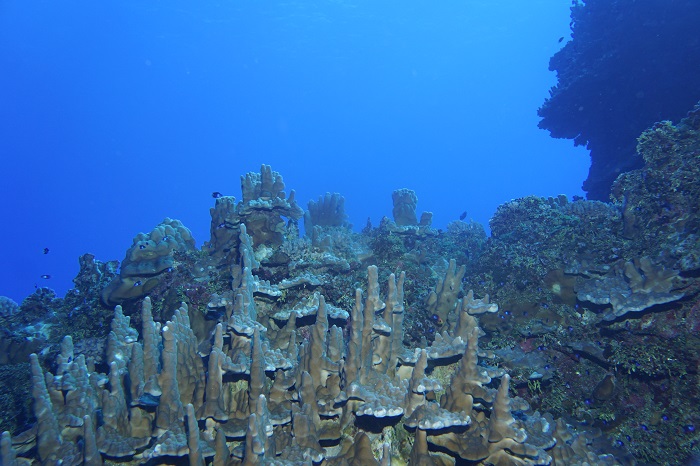
Some pretty coral.
There may not be an abundance of marine life, but there are plenty of interesting creatures in the Rapa Nui waters if you’re patient and know where to look. On just two dives, I found a scorpionfish, close to a dozen eels, a guineafowl puffer, and a bunch of cowfish.
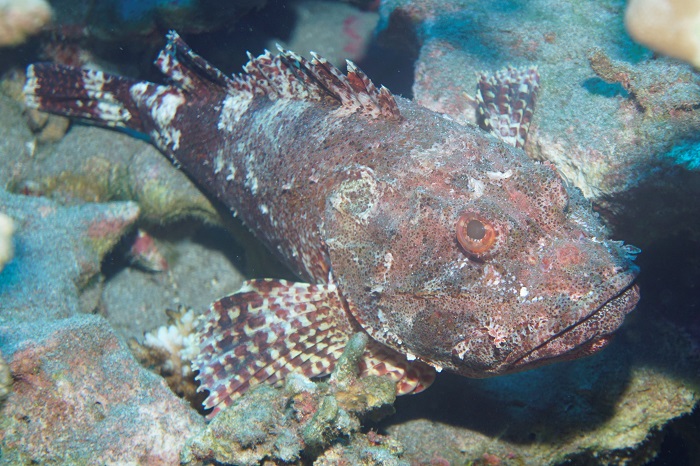
A grumpy-looking scorpionfish.
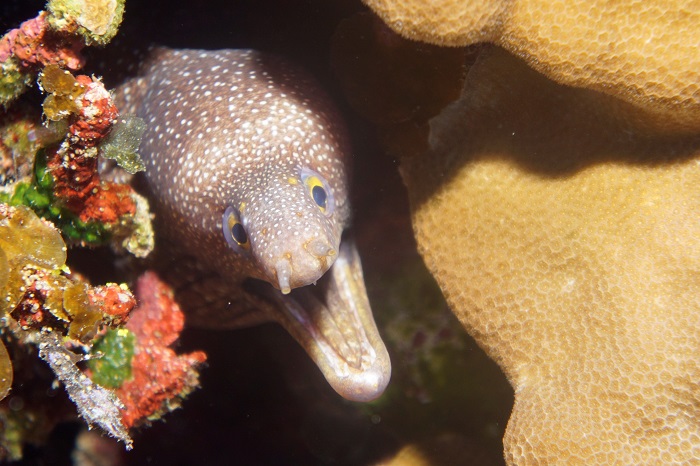
A moray eel.
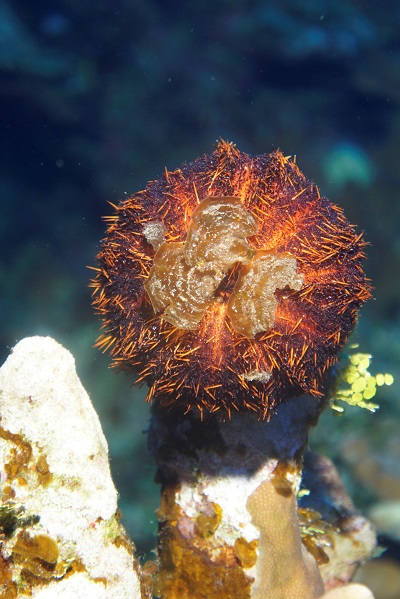
Sea urchin balancing carefully on some coral.
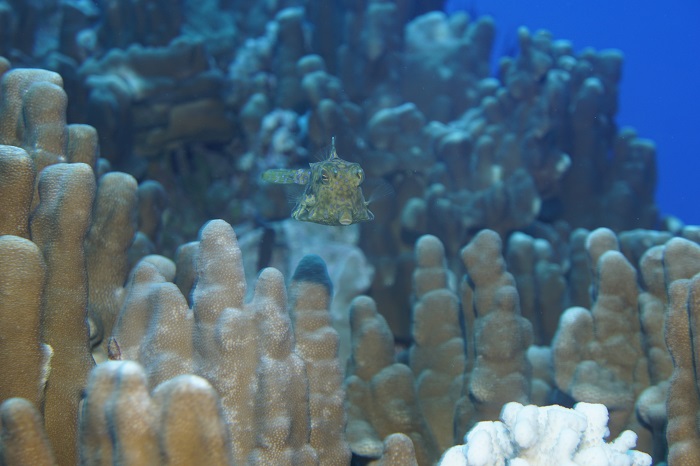
A cowfish floating above the coral.

Guineafowl puffer.
Plastic Pollution and Microplastics
Unfortunately, there was some bad news that put a damper on my great trip. Despite the remote location of Rapa Nui, the island hasn’t been able to escape the fate of islands worldwide: it is being inundated with plastic waste.
At one rocky site at the edge of the water, my six students students and I picked up about 20 pounds of plastic in only thirty minutes or so. There was plenty of evidence it was coming all the way from Asia, including a Chinese Coca-Cola bottle top and this piece of Korean plastic:
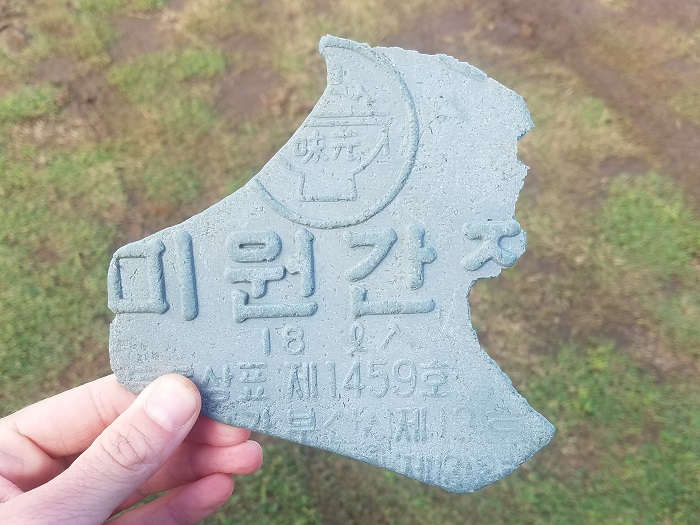
A piece of plastic that washed ashore all the way from Korea.
In addition, the island’s only sandy beach, Anakena, is littered with micro-plastics. These, too, have almost certainly come from thousands of miles away.
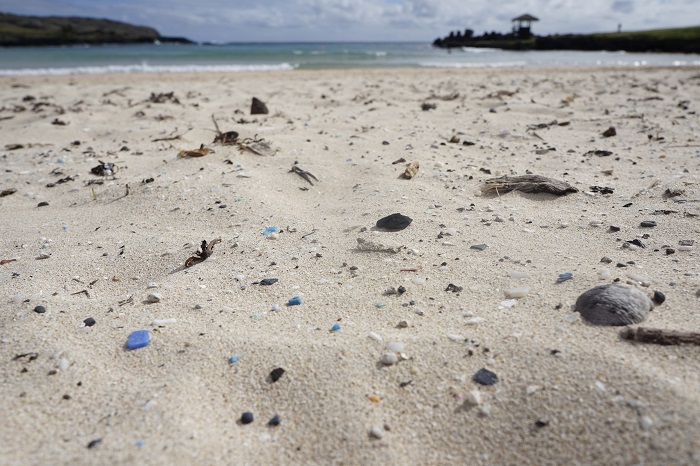
Microplastics on Anakena beach, the only beach on the island.
It was a shame to see that even an island as remote as Rapa Nui is being affected by humanity’s carelessness and over-consumption. It was also a good reminder to do what I can to reduce my own plastic waste.
Total dives this trip: 2
Total dives: 193
Share this Post
